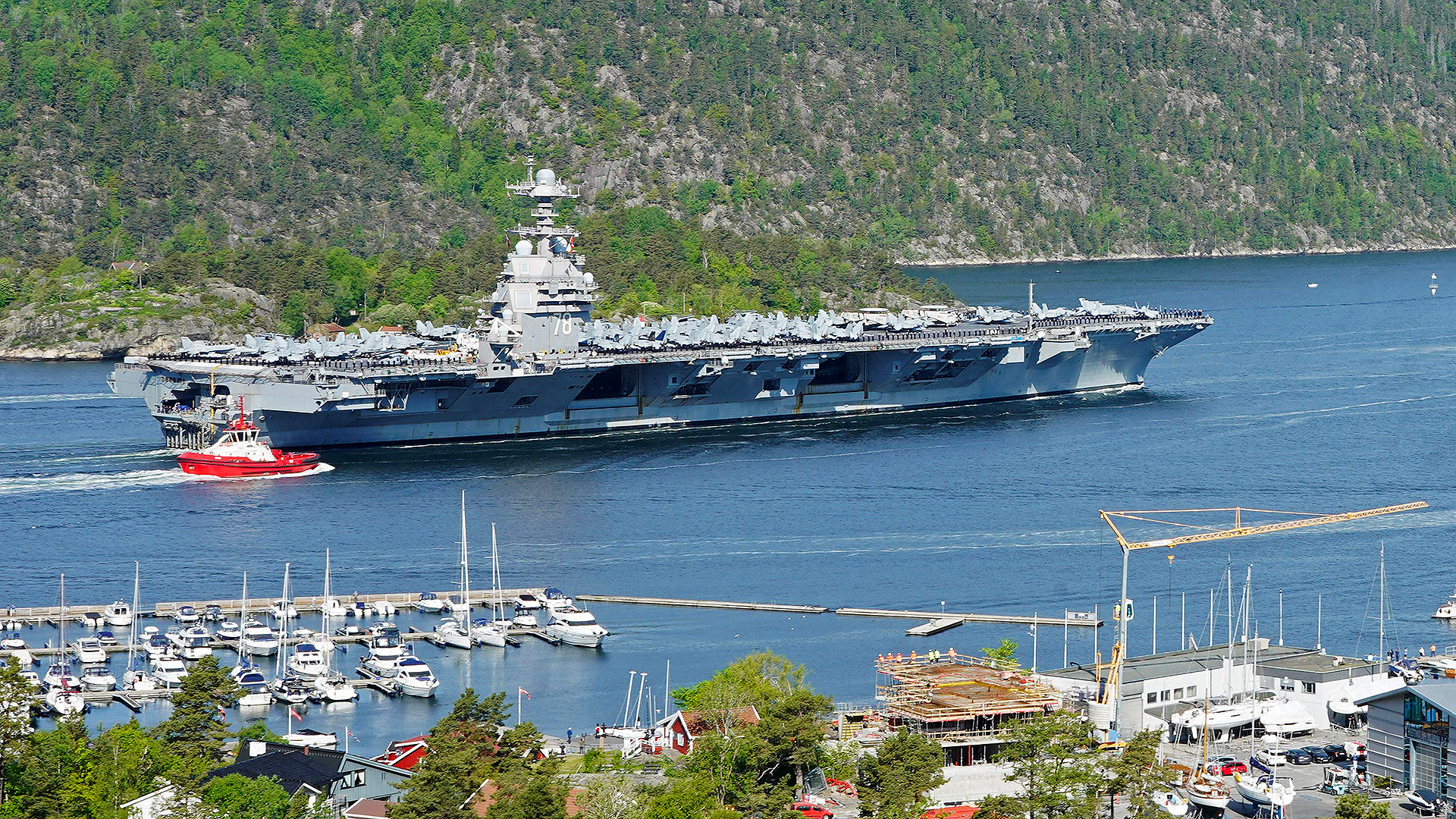The U.S. Navy’s newest supercarrier, the USS Gerald R. Ford (CVN-78), arrived in Oslo, Norway today for a scheduled port visit. While American carriers do operate off of Norway, this marks the first time a U.S. aircraft carrier has visited Norway in 65 years, following USS Intrepid‘s (CVA-11) visit to Oslo in July 1958. The visit is also a significant moment for the Ford, which is currently on its first full-length cruise after years of technical problems and other setbacks since it was officially delivered to the Navy four years ago. The visit comes amid growing U.S.-Norwegian military co-operation in recent years given growing military pressure from Russia in the Arctic Circle.
Ford’s Oslo visit marks the ship’s first stop while deployed to the U.S. Naval Forces Europe (NAVEUR) area of operations, according to a Navy press release dated May 24. This is not, however, the vessel’s first port visit outside the United States of late – having visited the port at Halifax, Nova Scotia last year.
Footage of the carrier transiting the Oslofjord, an inlet connecting Oslo with the North Sea, has been circulating on social media from both official and unofficial accounts, which you can see below.

On the banks and hillsides surrounding the Oslofjord, dozens of Norwegians gathered to watch the impressive sight of the Ford venturing towards the country’s capital, guided by tugboats. Ford measures roughly 1,092 feet (333 meters) long, with a beam of 256 feet (78 meters) at its flight deck, and a height of 250 feet (76 meters). What’s more, the carrier’s draft of nearly eight meters up to 13 meters, depending on the source, proved significant when transiting the Oslofjord. At its lowest point through Drøbaksundet, the Olofjord measures just 19 meters deep, Norway’s NRK media outlet reports.
During the visit to Oslo, Ford will host local officials and key leaders for a reception to enhance the U.S.-Norwegian partnership. In addition, sailors will have the opportunity to visit some of the city’s most significant historical and cultural landmarks. Ford is expected to stay at Oslo until next Tuesday, The Associated Press reports, after which it will likely take part in drills with the Norwegian armed forces, possibly in the Arctic.
“This visit is an important signal of the close bilateral relationship between the U.S. and Norway and a signal of the credibility of collective defence and deterrence,” said Jonny Karlsen, a spokesperson for the Norwegian Joint Headquarters, the operational command centre of the military, AP reports.
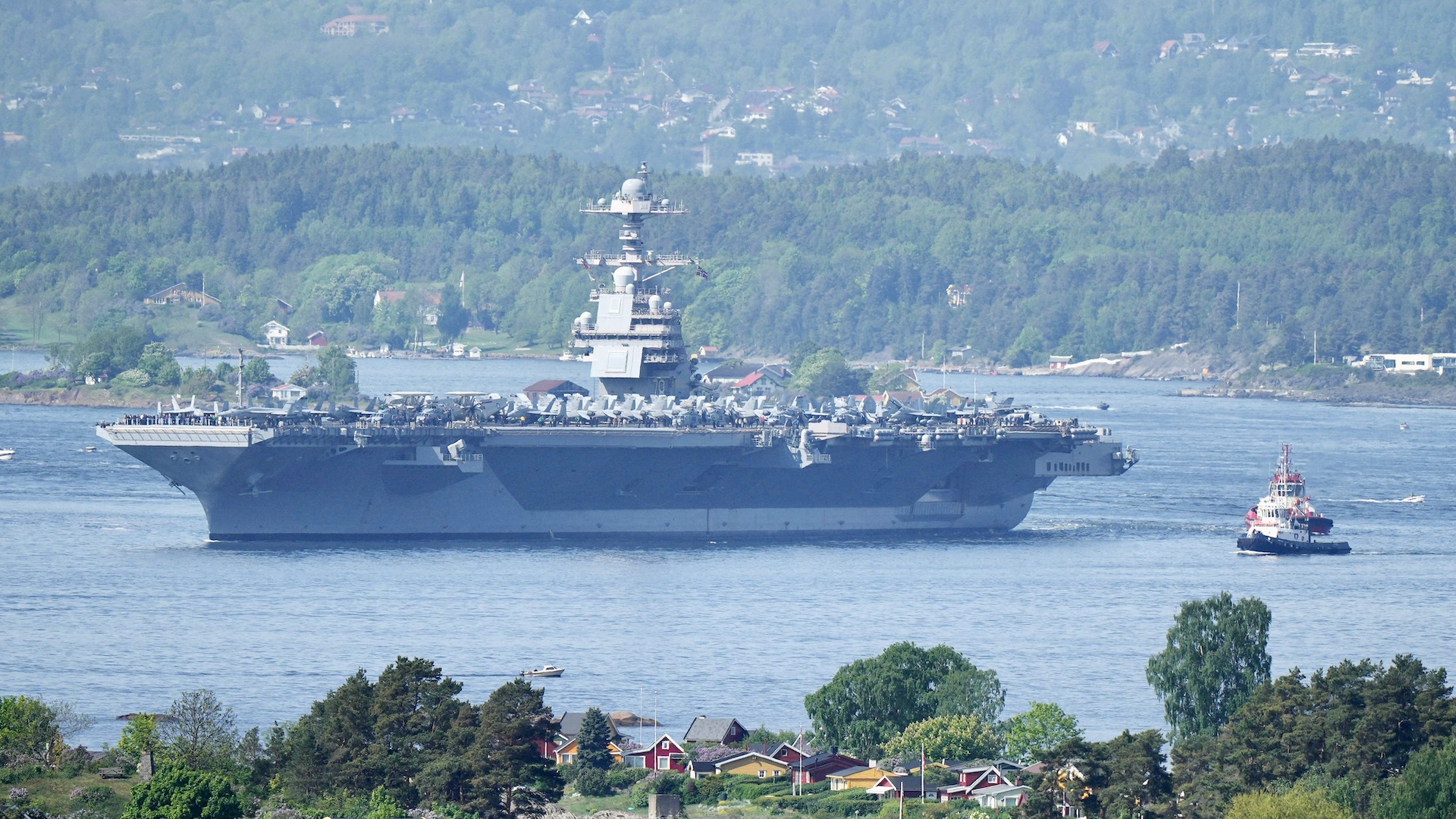
Capt. Rick Burgess, Gerald R. Ford’s commanding officer, said the following of the deployment according to the Navy’s recent press release. “It is an honor, joy, and thrill to visit Oslo and show our cherished partner the Navy’s newest class of aircraft carriers. … The crew is beyond excited for this opportunity to serve on the first U.S. aircraft carrier to make this historic visit to Norway in 65 years.”
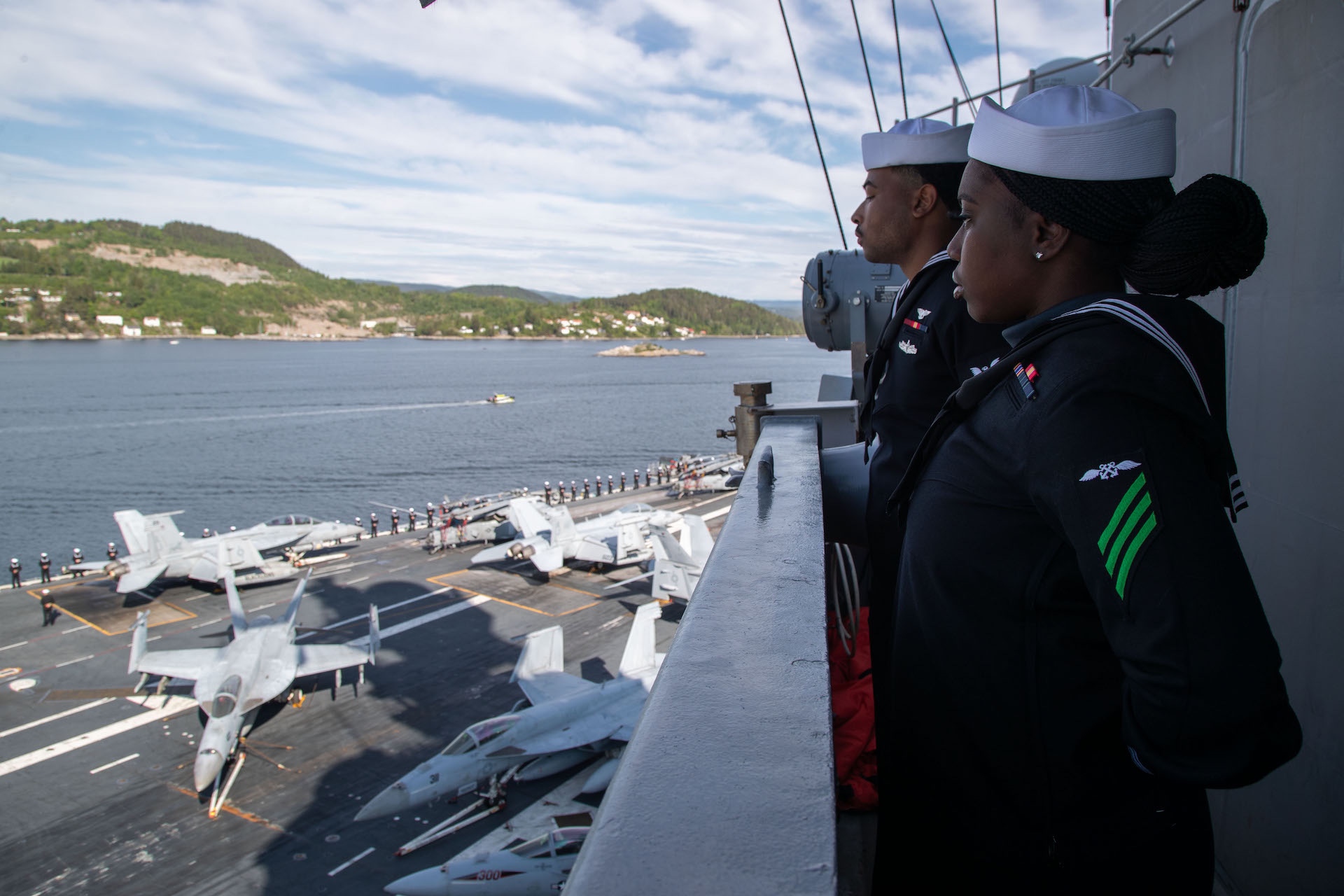
The importance of the Oslo visit can’t be overstated for Ford. Although the vessel conducted a brief operational deployment in the Atlantic last year, including exercises with strategic allies, this was, by the Navy’s own admission, more of a stress-test for the ship. Ford has struggled to reach a state of true operational readiness since it was delivered to the Navy in 2019, suffering a series of issues with its advanced electromagnetic aircraft catapults and arresting gear, radars, weapon elevators, and other systems.
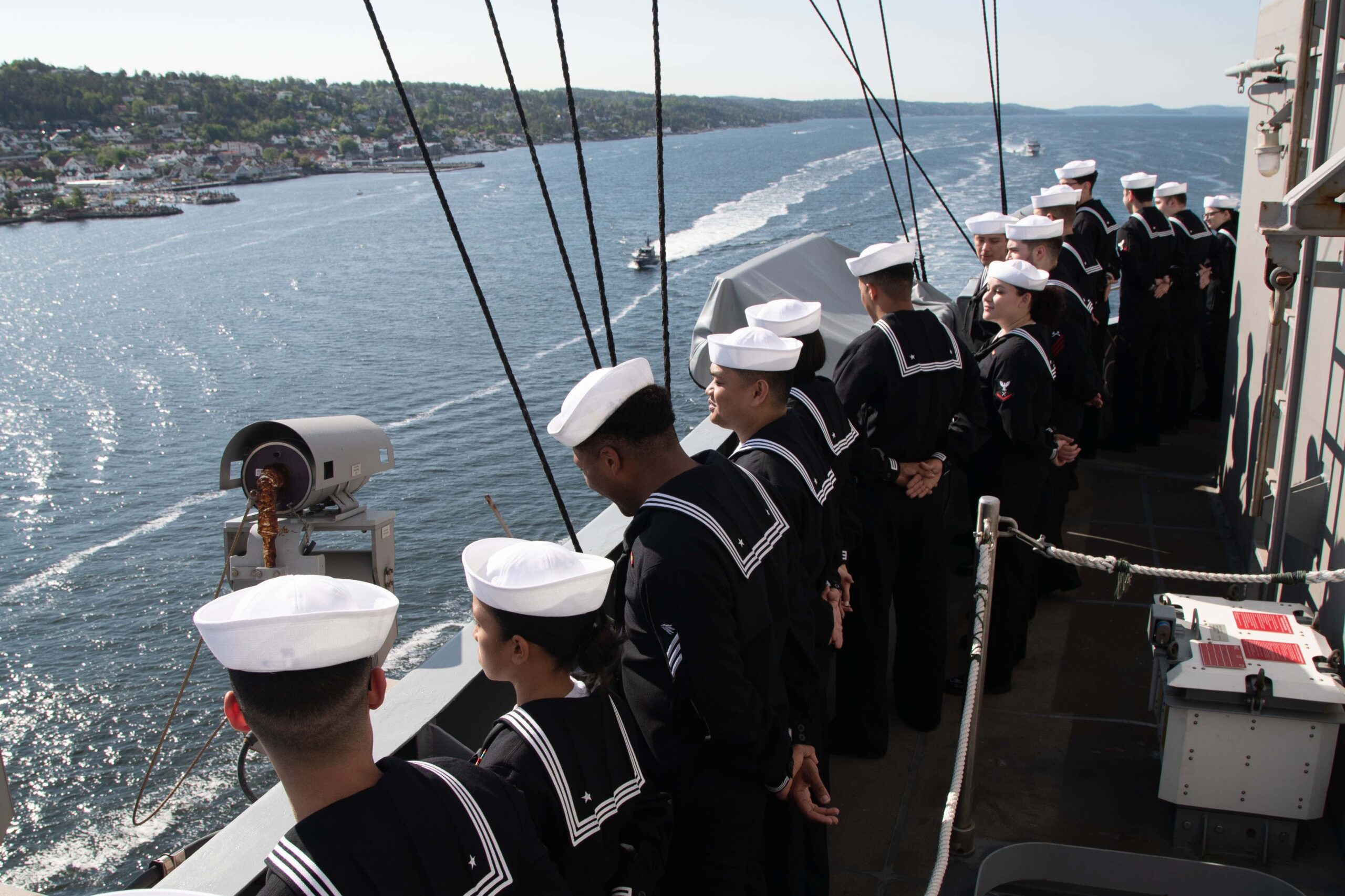
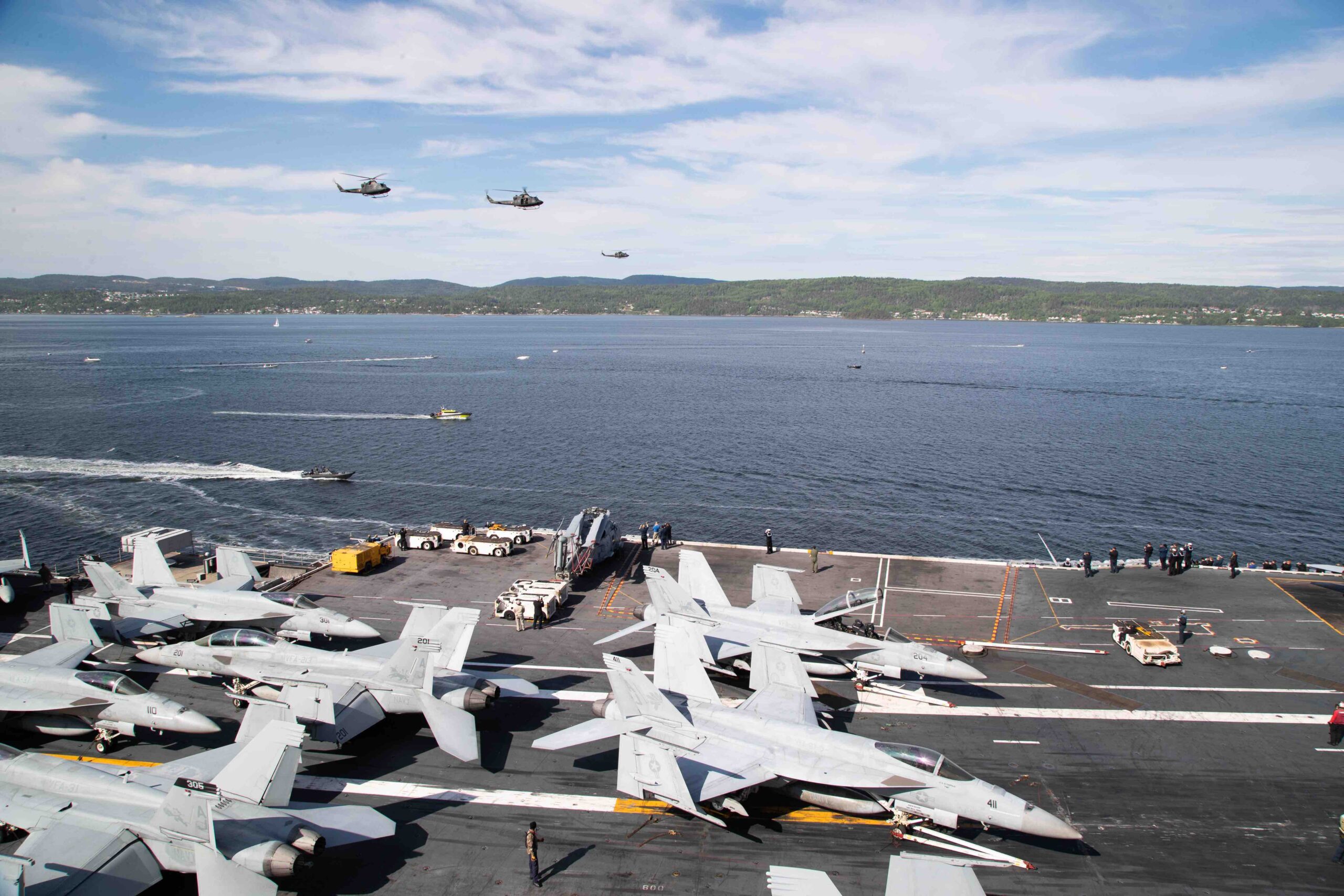
As The War Zone has noted previously, issues surrounding the catapults and arresting gear have proved significant for the carrier, owing to the fact that the Navy has argued these provide Ford class carriers with increased sortie generation rates over their Nimitz class predecessors. The overall cost of the Ford has also mushroomed in recent years, with the Navy capping its cost ceiling at $13.2 billion.
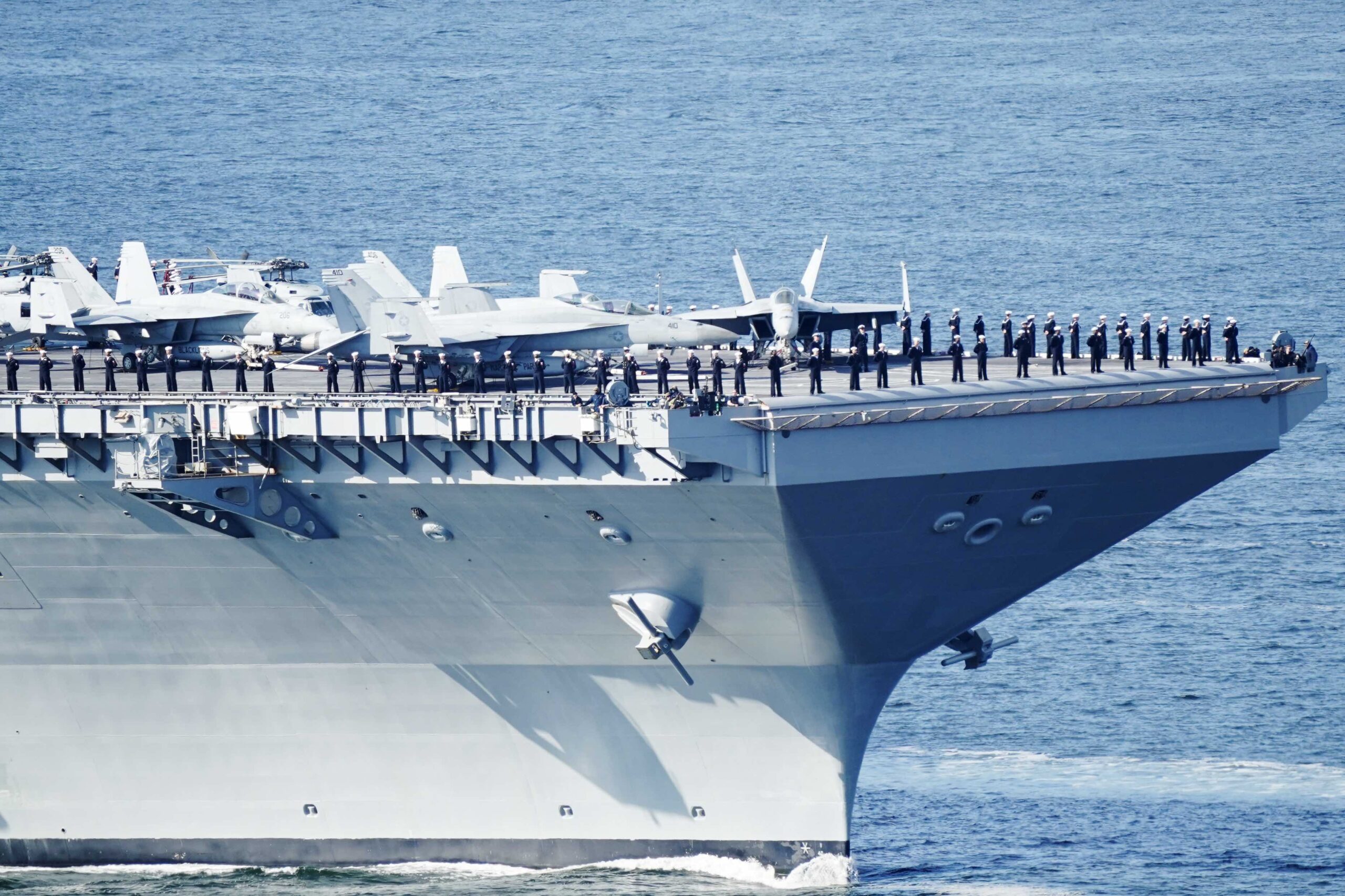
The port visit to Oslo comes after Ford’s departure from its homeport in Norfolk, Virginia on May 2. As we reported at the time, it was anticipated that the vessel would take the place of the Nimitz class carrier USS George H.W. Bush (CVN-77), which returned to Norfolk earlier this month after an eight-month cruise around Europe and the Middle East. According to Navy Capt. Brian Metcalf, head of the Ford class carrier program office, Ford’s deployment is expected to last “at least” six months.
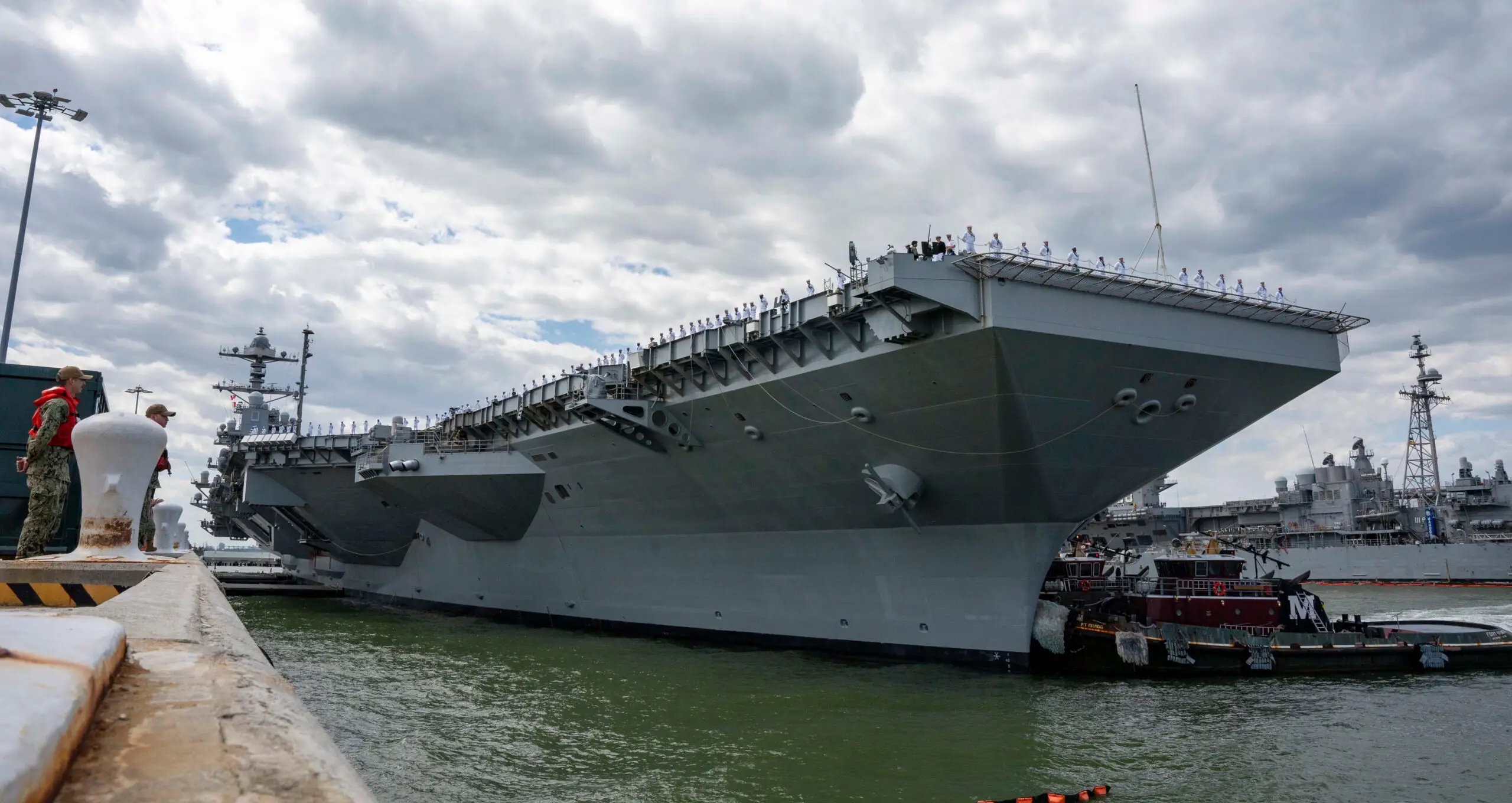
The Ford is currently in the region as part of the Gerald R. Ford Carrier Strike Group (GRFCSG), which is conducting a scheduled deployment to the U.S. Naval Forces Europe-Africa/U.S. Sixth Fleet area of operation. This follows GRFCSG’s completion of Composite Training Unit Exercise (COMPTUEX) on April 3, designed to stress-test the defensive capabilities of carrier strike groups before upcoming deployments.
According to the Navy’s recent press release, GRFCSG consists of Carrier Strike Group 12, Carrier Air Wing 8, and Destroyer Squadron 2 (DESRON 2). Participating escorts include the Arleigh Burke class destroyers USS McFaul (DDG 74), USS Ramage (DDG 61) and USS Thomas Hudner (DDG 116). While it was previously unclear if the Ticonderoga class cruiser USS Normandy (CG 60) would also accompany the carrier strike group, images released by the Navy have subsequently confirmed Normandy’s presence in European waters. Typically, carrier strike groups are also accompanied by one or more nuclear fast attack submarines. You can read more about the listed elements and squadrons within GRFCSG here, and find out what it was like to train with carrier strike groups around Norway during the Cold War here.
Prior to arriving at Oslo today, the carrier strike group integrated His Norwegian Majesty’s Ship (HNoMS) Roald Amundsen (F311) as the GRFCSG Surface Warfare Commander. On May 22, Vice Adm. Thomas E. Ishee, commander of U.S. Sixth Fleet and Naval Striking and Support Forces NATO (STRIKFORNATO) embarked Ford in the North Sea. Ishee was joined aboard Ford by the U.S. Ambassador to Norway Marc Nathanson, Norwegian Chief of Defense Gen. Eirik Kristoffersen, the Chief of the Royal Norwegian Navy Rear Adm. Rune Andersen, and members of the Kingdom of Norway’s government and military.
More broadly, the Gerald R. Ford Carrier Strike Group has been participating in NATO exercises in European waters this month, recently sailing in formation during a passing exercise with Standing NATO Maritime Group 1. This comes as U.S. Sixth Fleet and STRIKFORNATO execute Exercise Formidable Shield, an interoperability exercise from the High North and North Atlantic Ocean that runs from May 8-26.
Of course, this all comes amid greater interoperability between U.S. and Norwegian forces in recent years, owing to the strategic and geographical significance of Norway. As well as being a NATO member, Norway also shares a 198-kilometer-long (123-mile-long) border with Russia. It also sits on the highly strategic GIUK gap that is a bottleneck for Russian submarines activity. Its coast also expands across the increasingly important arctic region.
U.S.-Norwegian interoperability has extended beyond the naval realm of late, it should be noted, with U.S. bombers recently using a Norwegian Air Base above the Arctic Circle for the first time. These interoperability exercises, alongside Ford’s visit to Norwegian waters, cements the U.S.’s commitment to its European partners in a region broadly currently experiencing the turmoil of Russia’s all out war against Ukraine. They also demonstrate unity in the aforementioned highly strategic Arctic region, which Russia has increasingly looked to expand its contorl over.
Moreover, the entire Nordic region has grown in significance as of late owing to Finland’s joining NATO in April and Sweden’s move to do the same. There’s been an uptick in co-operation in the region of late, particularly amongst local air powers in response to the Russian threat.
“Norway is a strategic partner in the continued efforts to maintain a secure and stable Arctic and North Atlantic region that benefits global order,” said Rear Adm. Erik J. Eslich, commander of Carrier Strike Group 12, according to the Navy’s recent press release. “We are committed to our NATO Ally and fostering our strong relationship built on a foundation of shared values, experiences, and vision.”
On the prospect of joint U.S.-Norwegian military training exercises in the Arctic following Ford’s Oslo visit, the Russian embassy in Oslo stated that, “there are no questions in the (Arctic) north that require a military solution, nor topics where outside intervention is needed,” Reuters reports.
All in all, Ford’s Oslo visit marks a welcome change of fortunes for the vessel and marks the first port visit on the highly anticipated ship’s first true deployment.
Contact the author: oliver@thewarzone.com
